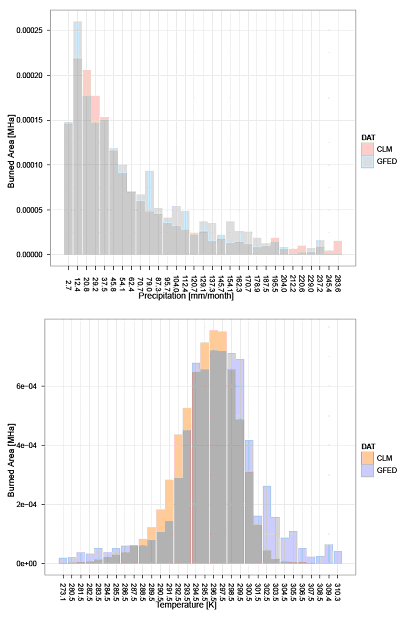Which question has been addressed in this step?
Exploring risk: What is the impact of climate change on forest fire risk (probability x burned area) in Europe?

Figure 1 - Fire probability in Europe computed with the refined CLM Fires model (Figure modified from Migliavacca et al., (2013), Modeling burned area in Europe with the Community Land Model. Journal of Geophysical Research Biogeoscience)

Figure 2 Monthly burned area for the 5 European countries that mostly contribute to the continental burned area (France, Italy, Spain, Portugal and Greece) and its sum (Southern countries). Red and blue lines represent the burned area simulated with CLM-AB (original model parameterization) and CLM-AB MOD (calibrated model), respectively. Green lines represent the monthly burned area reported in the European Forest Fires Information System while purple lines the burned area reported in the Global Fires Emission Database GFEDv3 (Migliavacca et al., 2013).

Figure 3 - Burned area in bins of mean monthly temperature (a), precipitation (b) and aboveground biomass (c) according to CLM--AB (Red lines), CLM--AB MOD (Blue lines) and GFED (Purple lines). This graphics show that the observed relationship between burned area and climate (purple line) is well described by the calibrated model (CLM-AB MOD).
Toolbox detail page(s) available for methods and tools applied in this case step:
| Community Land Model |

